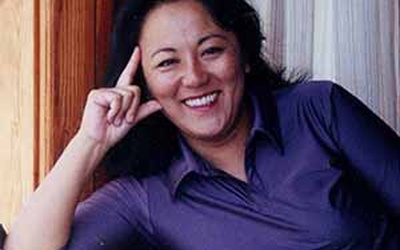Being Nikkei in Peru: A mark of identity

The Nikkei identity in Peru was built in a multiethnic and multicultural landscape. This historical experience was carried out while maintaining the traditions and customs inherited from Japanese cultures, and was characterized by its contradictions and heterogeneity. Today, being Nikkei in Peru is a valuable and irreplaceable brand that is permeating the different political, artistic, gastronomic, musical, folkloric and sports spaces, among others. My articles will provide an overview of this insertion that operated throughout more than one hundred years of Japanese presence in Peru.
Stories from this series
Artistas Nikkei de Perú: ¿Movimiento cultural o coincidencia étnica?
May 16, 2007 • Doris Moromisato
Una vez Tilsa Tsuchiya, la artista plástica más importante de Perú, afirmó: “Si uno observa el arte precolombino, el chino, el japonés, verá que en el fondo son la misma cosa. ¡Pero si el Perú es oriental!”. La verdad es que Tilsa, descendiente de un inmigrante japonés y de una mestiza china andina, representa el emblema de la multiculturalidad del país y es la punta del iceberg de más de treinta artistas que se identifican así mismos como Nikkei. En …
Organización geográfica y económica de la comunidad Nikkei en Perú
April 18, 2007 • Doris Moromisato
Las primeras presencias japonesas en Perú se dieron hace 400 años en Lima. Recién a partir de 1899 se requirió a los japoneses como trabajadores agrícolas y miles de ellos se adaptaron a los desiertos de la costa, superando el soroche o mal de altura de los andes y los inclementes climas de la selva. Pero la mayoría dejó las palas y rápidamente se infiltraron en las ciudades abriendo pequeños negocios, ofreciendo múltiples servicios con habilidad, esfuerzo y un implacable …
Mujeres Nikkei: Guardianas de la comunidad peruano-japonesa
March 21, 2007 • Doris Moromisato
En 1992 la crisis matrimonial del, aquel entonces, Presidente de la República Alberto Fujimori y su esposa Susana Higuchi, sacó por primera vez a la luz pública la rígida jerarquía patriarcal de las familias nikkei y la situación en que viven sus mujeres. Ante la violenta irrupción de la nisei Susana Higuchi, denunciando maltratos físicos y psicológicos por parte de su marido y reclamando sus derechos como cualquier ciudadana peruana, todos los medios de comunicación lanzaron la pregunta: ¿dónde está …
La nación okinawense en Perú
Feb. 27, 2007 • Doris Moromisato
En la actualidad, la gran mayoría de descendientes japoneses en Perú tienen sus raíces en la prefectura de Okinawa. Se comenta que la cifra extraoficial es de un setenta por ciento. De hecho, ya no resulta difícil encontrar en la historia legislativa, gubernamental, municipal, artística o deportiva de Perú apellidos típicamente okinawenses como Higa, Arakaki, Shimabukuro, Matsuda, Kanashiro, Shiroma, Nakasone, Tamashiro, entre otros más. Cabe destacar que la inmigración japonesa al Perú fue una experiencia basada en la diversidad. Sin …




